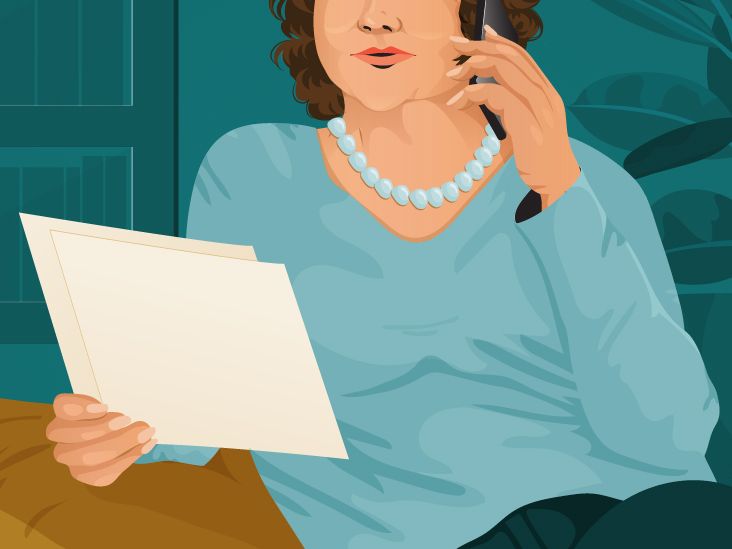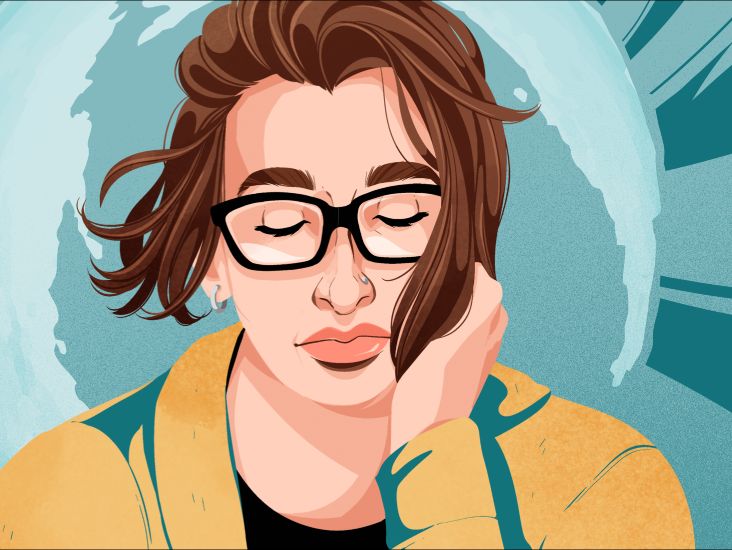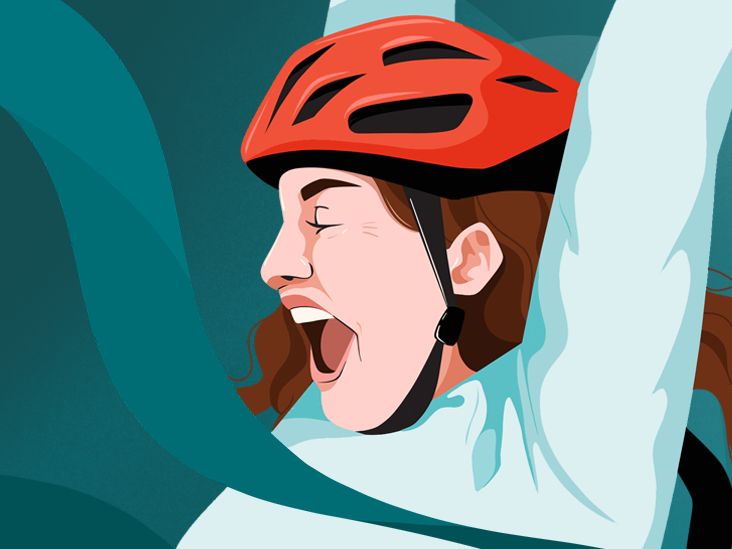
I sat anxiously in the waiting room of my new therapist’s office. I was so nervous. But at a certain point in researching topics regarding your health, an outside opinion is necessary.
I stumbled upon “autism” all by myself by typing in “I need help with social skills all the time” into Google. I decided I was in over my head and needed to talk with a professional.
In my opinion at the time, I wasn’t anything like what I thought autistic people were like. I sought a therapist with expertise in autism because I figured they would recognize the condition when they saw it.
I paid for a few sessions where we talked about nothing, just to see if I could trust her. My chest pounded through the pleasantries. Then, I finally decided to discuss my elephant in the room — my stagnant career, which I believed was partially happening because I needed help with my social skills.
She asked me if I’d ever heard of autism.
I gulped a little, lied, and said, “No.”
My therapist told me about different websites to check out, and later that night, I did. I immediately felt connected to other autistic people’s problems and solutions. I dove in headfirst and started a binder to take notes and collect what I learned.
For the next couple of months, I shared many aspects of my life with my therapist, inviting her to help me understand and address them. She started leaning toward me potentially having a dual diagnosis of autism and ADHD. After working together for 6 months, she suggested I meet with a psychiatrist.
Everything was starting to feel like a lot, and cost a lot, too. Every therapist appointment was $30 (on a sliding scale), and each psychiatrist appointment was a $100 copay.
During the first two psychiatry appointments, I talked to two different physician’s assistants who said nothing was wrong with me. That upset my therapist, so she called the psychiatrist directly. She demanded that he see me himself and instructed me to show him my binder of notes and resources.
The psychiatrist almost immediately diagnosed me with autism spectrum disorder (ASD). He also set up an appointment the week after for me to get evaluated through use of the Conner’s Continuous Performance Test, a computer test used to diagnose ADHD.
Once I had finally gotten past the PAs and into the psychiatrist’s office, the whole thing took only 15 minutes.
I completed the Conner’s test, which cost me $160 coinsurance. After I got the results, the doctor started me on Adderall.
I hated being on Adderall. An hour after I took each dose, I had a meltdown. This happened almost every time. You can imagine how hard it was to function this way.
This reaction to the medication often occurred during my work shifts, surprising both me and my coworkers. I found I had to explain myself and my behavior a lot, which was awkward and burdensome. My autism masking skills disappeared, and I lost other skills too.
I found I could no longer smell a seasoning or spice to tell if it went in a dish I was making, and my steady seasoning hand was no longer so steady, either. My cooking suffered immensely, and I lost a lot of confidence in that and other areas of my life.
I also started to have real problems where I suddenly acted on behaviors that previously were just intrusive thoughts. For example, my husband and I were arguing, and instead of just experiencing the urge in my brain, I actually physically pushed my husband. It was completely unlike me, and very scary.
My doctor and I decided to change my medication from Adderall to Vyvanse. This was more manageable, but I developed tics as a side effect.
My insurance changed for the new year, and my current doctors didn’t accept the policy. After a few months without care, I finally found a provider who took my insurance. My treatment resumed.
A variety of medications were thrown at me to see what worked. Around every 4 weeks, I had to try a different medication because the side effects of the previous one were too much to bear.
One medication I was on, an antipsychotic, overcorrected my aggressive urges. I felt hollow inside. Nothing touched me, not even movies that always make me cry, like The Notebook. I couldn’t even get excited about going to the zoo. I just didn’t feel like myself.
Another medication, Zoloft, caused my vision to become wonky to the point where I couldn’t drive.
And still, there were more medications.
My reputation at my job slowly deteriorated as a result of my perceived flakiness and new accessibility needs. The fact that my actual productivity wasn’t affected didn’t matter. After a weekly meeting about my performance ended with a suggestion from human resources that I change locations, I decided to start looking for another job.
The suggestion to change locations upset me. I had been working there for 4 years, and was good at my job. I didn’t understand why sending me away was an option. In my final weeks at the office, I struggled with a tense atmosphere and awkwardness between myself and the management team. When I handed my resignation letter to HR, the representative nodded and said, “It’s probably for the best.”
I found a new job within 2 weeks, and moved on.
My mental health difficulties didn’t relent, however, and after 1 month at the new position, my doctor advised me to go part time. Since I had just started the job, I didn’t feel comfortable doing this, so I didn’t take her advice. I continued to work full time until my next appointment 3 months later.
My doctor was not amused and wrote me another note asserting that I needed to go part time, which she instructed me to give to HR. I did as she instructed, and began a part-time schedule.
This move hurt my finances, but the new schedule allowed me to establish consistency in my work, and I flourished. This consistency built confidence in me, giving me time and space to properly analyze what part of my medication regimen wasn’t working. I organized my feelings and symptoms with lists and journal entries.
I concluded that I couldn’t focus on work tasks and simultaneously deal with my emotions for more than a few hours at a time without crashing and having a physical meltdown.
Unfortunately, I had almost no control over what would set me off or trigger me. I would end up a crying mess after regular conversations that, before medication, wouldn’t have bothered me at all. I struggled to figure out my own emotions. I felt frustrated that my brain chemistry had changed multiple times, making it hard to keep up with anything outside my part-time job.
I also knew that I spent too long coping in ways that hurt my mental, physical, and emotional well-being. This included overworking myself, ignoring my boundaries, and putting others first when I needed to prioritize myself. A central aim of my therapy sessions was learning to maintain boundaries even while dealing with the ups and downs of medications.
Then, after over 25 different medications, I finally found a combination that truly worked for me.
Diagnostic time
- The global mean age of autism diagnosis between 1990 and 2012 was between 38 to 120 months (between around ages 3 to 10 years old), according to research from 2020.
- Research shows the average age of ADHD diagnosis is
7 years old .
When I sat anxiously in my therapist’s waiting room all those years ago, I never imagined how life changing navigating this journey would be. It took years for a team of mental health professionals to figure out how to help me. Getting my diagnosis was expensive, and managing my autism and ADHD seemed to start fires in every aspect of my life.
The decision that I was in over my head and needed a professional opinion was one of the most profound decisions I’ve ever made. After all, I wasn’t anything like what I thought autism looked like. But autism doesn’t just have one form.
Society is learning — and must continue to learn — how to accept, support, and reach out to the full spectrum of autistic people in a meaningful way.
If I can pass along any wisdom to those on a diagnosis journey, it would be to stay strong of will and be careful not to lose yourself. People have ideas about how things work and are generally uninterested in having those ideas challenged. My very existence challenges “the norm” regarding timelines for autism and ADHD diagnoses.
Not everyone receives a timely diagnosis, or gets the care they need at a young age. But that doesn’t mean it’s too late.
Arianne Garcia is an autistic Chicana writer based in San Antonio, Texas. She was diagnosed at 25 with ADHD and Autism Spectrum Disorder. She writes about autism and other things on her website www.arianneswork.com, and you can follow her on Twitter @arianneswork.



